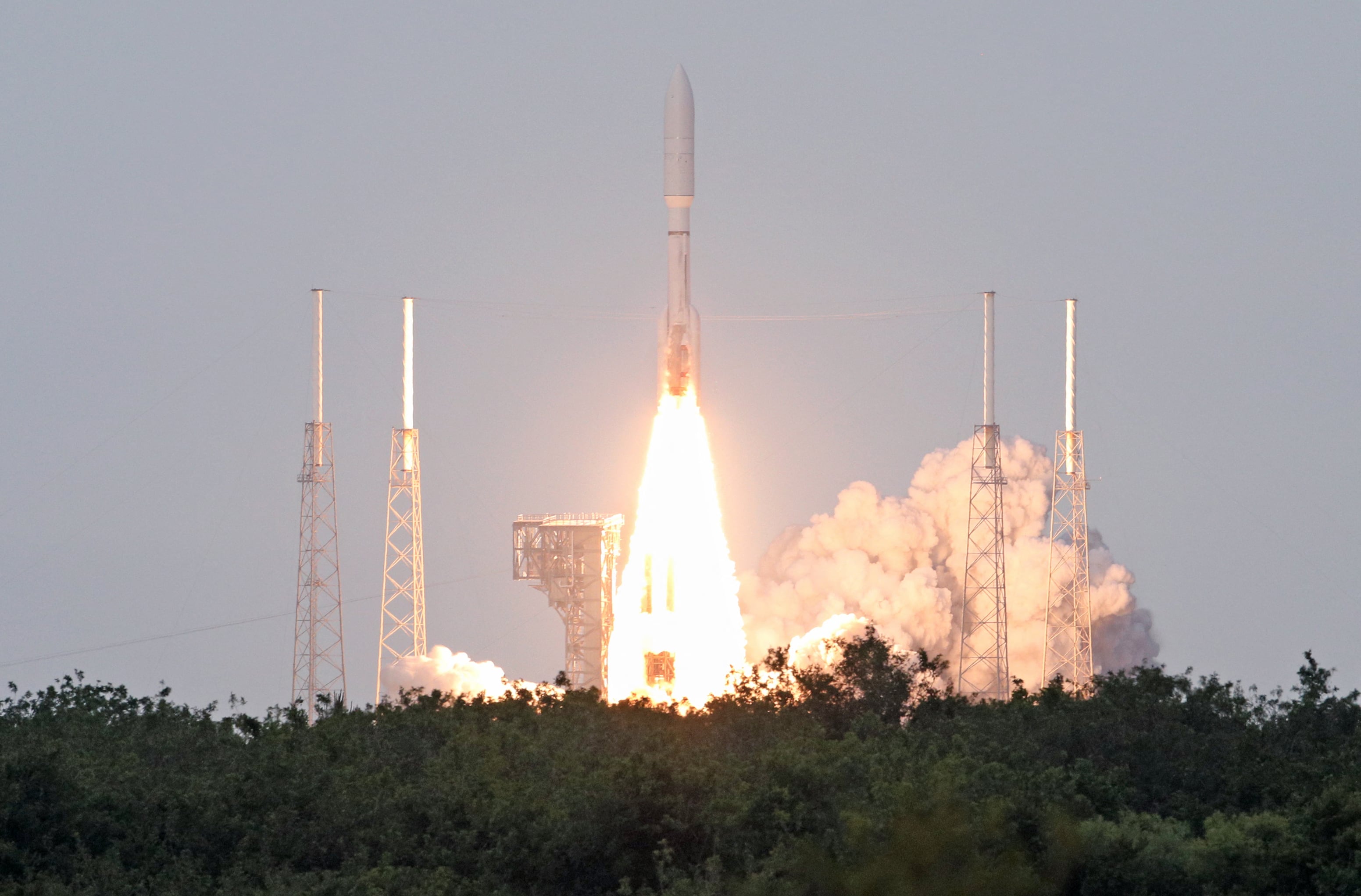WASHINGTON — In a new strategic vision, Gen. James Dickinson outlines the truths and tasks U.S. Space Command must adopt in order to maintain American space supremacy.
The breezy eight-page document reaffirms the incredible value space provides to the nation’s economy and military, but warns of the growing threat posed by anti-satellite weapons being developed by China and Russia. Throughout the Trump administration’s term, officials frequently cited the development and testing of anti-satellite weapons as a justification for the establishment of both Space Command and the U.S. Space Force, blaming China and Russia for bringing to space the potential for conflict and war.
“Our competitors are not only challenging national security and prosperity in cyberspace, on land, at sea, and in the air; they have turned space, a once peaceful environment, into a war-fighting domain,” Dickinson wrote. “By developing, testing and deploying counter-space capabilities and evolving their military doctrines to extend into space, our competitors seek to prevent our unfettered access to space and deny our freedom to operate in space.”
RELATED

But before explaining how his command will uphold U.S. space supremacy in the face of such opposition, Dickinson outlined four “Space Truths” that provide a foundation for his vision.
“As the environment changes to reflect shifts in the geopolitical landscape, advances in technology and new threats, space will remain a critical component of our way of life and to our national security,” he explained in the forward of his strategic vision. “Our space truths are principles that reflect this enduring relationship. They will guide our military space operations through an increasingly complex environment and into an uncertain future.”
The space truths are:
- Space is a vital interest that is integral to the American way of life and national security.
- Space superiority enables the joint force to rapidly transition from competition to conflict and prevail in a global, all-domain fight.
- Space war fighters generate the combat power to win in space.
- Space provides the war fighter a combat advantage from the ultimate high ground to the last tactical mile.
Accordingly, Space Command’s mission is to conduct “operations in, from and to space to deter conflict, and, if necessary, defeat aggression, deliver space combat power for the joint/combined force and defend U.S. vital interests with allies and partners.”
Dickinson set up five tasks for ensuring there is “never a day without space” — the title of his strategic vision.
First, Space Command must understand the competition. That means educating war fighters on threats and adversaries, training them to outmaneuver enemies, and innovating through disruptive thinking.
The command must be built to compete and win, which includes getting to full operational capability, sustaining a war-fighting culture and adapting to the new environment, Dickinson said.
Space Command must maintain key relationships, strengthening existing alliances and enhancing interoperability, while bringing in new partners, he said.
“The complexity of operations in the largest and most challenging war-fighting environment requires us to strengthen our alliances and attract new partners,” said Dickinson at a Mitchell Institute preview of the strategic vision. “We must enhance interoperability through a joint-combined and a partner approach to space war-fighting operations. And we must unite around a compelling narrative focused predominantly on the concept that we work actively to retain and strengthen our space superiority. That narrative must also promote responsible behavior, responsible behaviors in space, over long periods of time, so they gradually become international norms.”
The Space Force has touted that it will be the first truly digital service, so it makes sense that Dickinson’s fourth task is maintaining digital superiority, which involves evolving cyber operations and investing in advanced technologies that will change war fighting.
And finally, Dickinson said SPACECOM has to integrate commercial and interagency organizations, from promoting responsible behaviors in space to advocating for greater space capabilities.
Nathan Strout covers space, unmanned and intelligence systems for C4ISRNET.








